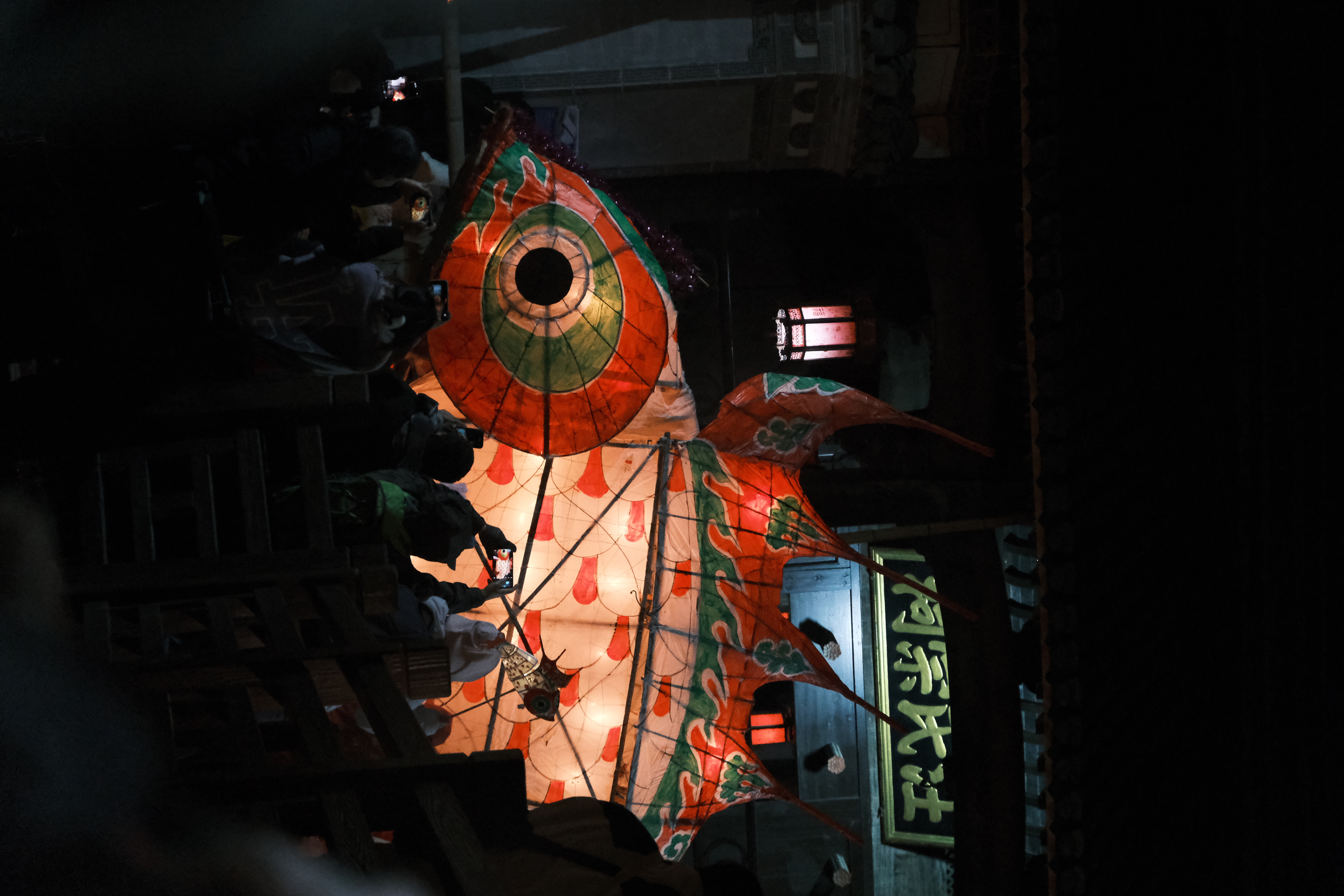Editor’s Note:
The “Rural Aesthetic Outreach” series reports embark on an in-depth exploration of rural culture, highlighting the tireless endeavors of faculty and students from the Academy of Arts & Design, Tsinghua University (AADTHU) across a range of domains: artistic creation, product design, intangible cultural heritage preservation, and rural aesthetic education initiatives. This series endeavors to convey stories with an unparalleled sense of immediacy, showcase authentic sentiments, and share down-to-earth experiences. With the endorsement of Tsinghua University’s 2024 Campus New Media Studio Support Program, we invite you to bear witness to and disseminate these vibrant practices and innovative forces from the heart of the countryside.
01
Big Fish from Afar
“The journey from the county town to the village spans a scenic yet arduous one-and-a-half to two-hour drive along winding mountain roads. As the journey begins to induce a gentle vertigo, the village emerges gradually, nestled serenely amidst mountains, adorned with bridges, caressed by flowing waters, and dotted with homes—a sudden, enchanting encounter with a living Shangri-La.”
Chen Xianjie, an undergraduate student from Class 2022 of the Department of Sculpture at AADTHU, spearheaded a social practice team to Shexian County, Anhui Province during the winter vacation.

Scenery of Wangmantian Village
Frequent social media users may have stumbled upon posts showcasing the fantastic Wangmantian Fish Lanterns during the Lantern Festival in Shexian County, Anhui Province. Illuminated by vibrant lights, these fish lanterns—both large and small—were paraded through alleys, bridges, and riverside areas, resembling fish wriggling and dancing under the night sky in the village. Gongs and drums resonated, firecrackers exploded, fireworks burst into bloom, and the brilliant firelight illuminated the crowd, their faces beaming with laughter and joy. The scene was a vivid portrayal of lines composed by Xin Qiji, “Panpipes moved the crowds, As jade kettle-shaped lamps turned, And fish-dragon dance the whole night through,” transforming into a concrete human world akin to a utopian dreamscape.

Wangmantian Fish Lantern Folk Custom
Chen Xianjie’s introduction to Wangmantian Village stemmed from this captivating festival. With a history spanning over 600 years, the fish lantern festival in Wangmantian Village embodies the villagers’ good wishes and has been handed down from generation to generation. Every Lantern Festival, the village hosts a grand fish lantern show. In recent years, thanks to the government’s support and social media’s reach, this folk activity has gained wider recognition, breathing new life and development opportunities into the village.
As Chen Xianjie delved deeper into Wangmantian Village and its Fish Lantern Festival, he uncovered fascinating insights. “The village lies deep within the mountains, with poor transportation. Initially, only a handful of mountain villages participated in the fish lantern festival. Over the past two years, however, the villagers have actively seized the opportunities presented by the rise of the internet and social media to gradually attract more tourist numbers around the Lantern Festival. Notably, villagers—middle-aged, elderly, young, and even migrants—operate relevant social media accounts, making the village’s online presence even more intriguing.”
Chen Xianjie, who grew up in a village, harbors a profound affection for the countryside. He finds folk culture incredibly charming and a source of inspiration for his professional creations. Over the years, he has witnessed the gradual erosion of the “pristine beauty of the village” due to extensive development, deeply feeling the countryside’s fragility. Consequently, he keeps pondering over questions about this ancient folk custom: why has the fish lantern festival persisted for 600 years in these ancient mountains, and how has it evolved today? As the “atmosphere of Spring Festival” fades, who in the villager still continue to uphold and transmit this tradition? In today’s era of advanced information networks, where is it headed in the future?
Determined to uncover answers to these questions and trace the source, Chen proactively reached out to villagers of Wangmantian through social media, expressing his desire to conduct practical research in the village.
It is his insight that “a folk festival ceremony is not merely a superficial material activity but encapsulates multiple functions such as culture, belief, and social ties, serving as an important emotional carrier for local social groups and reflecting unique regional cultural phenomena.”
To trace its origin, one must visit the land that has nurtured it.
Only by tracing the roots and understanding the original forms can we discuss the transmission of traditions. This involves “rediscovering and comprehending the profound cultural meanings of traditional festivals, thereby infusing them with new significance in modern society. It is a journey to rediscover the cultural value of folk festivals and reconnect emotional ties, thereby endowing them with renewed charm.”
These two paragraphs have been included by Chen Xianjie in the introduction for the AADTHU “Tracing the Source” Social Practice Program, which he promoted and officially launched in early 2023. He hopes to inspire more peers to explore the origins and core of rural culture, with Wangmantian Village in Shexian County, Anhui Province, standing out as one of the highlights.

